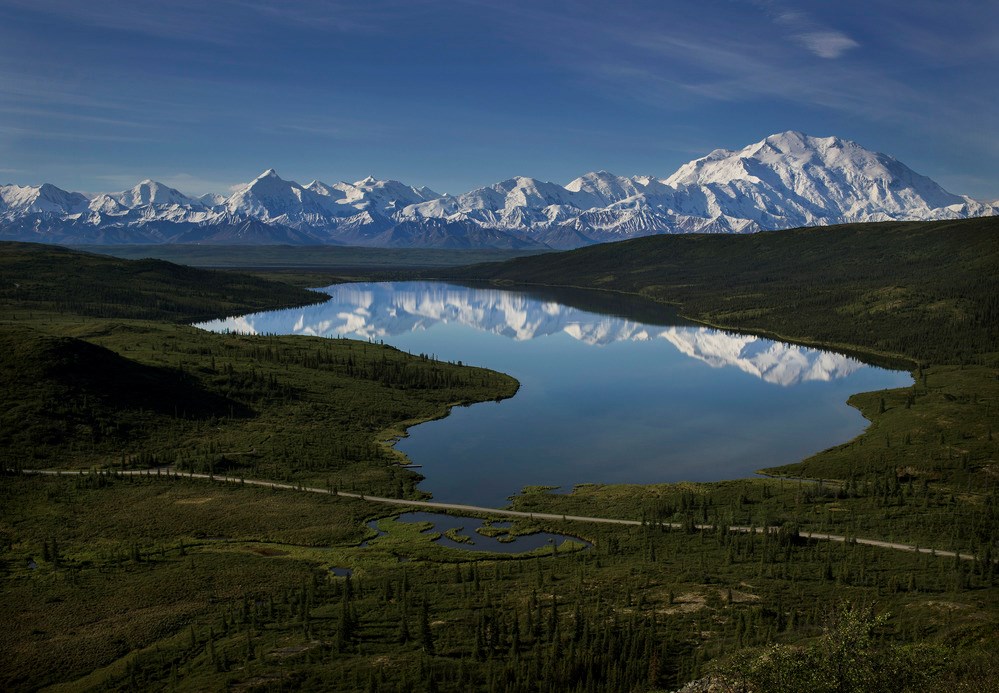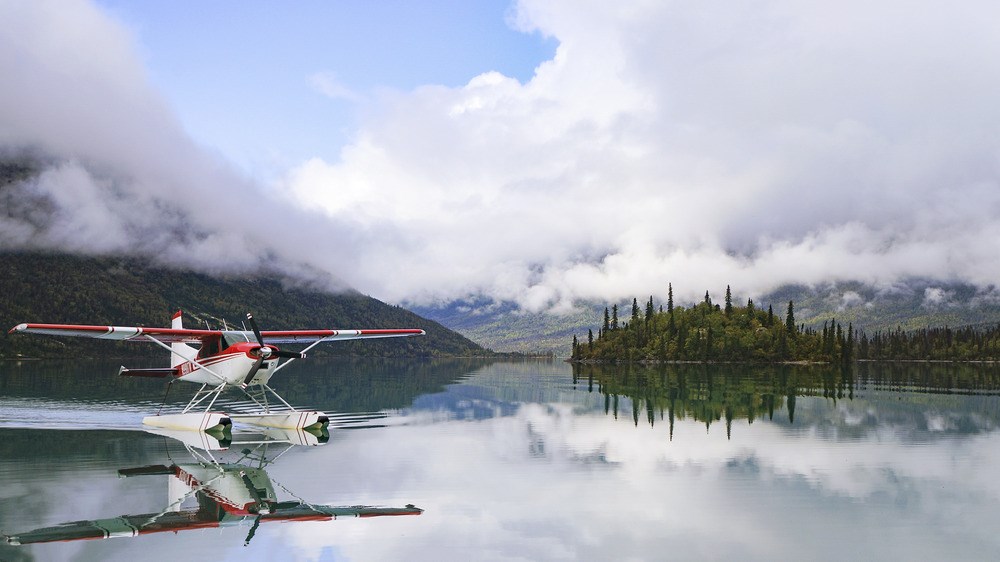Last updated: February 1, 2025
Article
Proactive, early detection could protect Alaska’s lakes from invasive elodea
By Laura Vachula, October 2024

NPS Photo / Emily Mesner
But elodea, a water weed, could change things. It’s the first aquatic invasive plant in Alaska, and scientists have observed its detrimental effects on underwater habitats and fish populations, including salmon. Proactively preventing elodea from spreading through Alaska’s lakes is critical to protect healthy ecosystems from demise.
For Student Conservation Association interns Liam Irvin and Sam Schroeter, this means a summer spent waking up in tents and paddling through remote lakes in Alaska national parks. Their mission: Find elodea before it proliferates.
Is there elodea in Wonder Lake?

Nicole Swenson / USFWS
“It affects their life cycle,” Irvin said.
Irvin and Schroeter, along with National Park Service (NPS) crew lead Benjamin Wright, made up one of three invasive plant crews traveling to lakes throughout Alaska this summer.
“We’re surveying where the park managers tell us they have the greatest need—places that receive a lot of floatplane or boat action,” said Anna O’Brien, NPS invasive plant management coordinator in Alaska.
This year the crews have been to high-risk lakes in Gates of the Arctic National Park, Wrangell-St. Elias National Park, Kenai Fjords National Park, Lake Clark National Park, and Denali National Park.
As rain drizzled on the crew at Wonder Lake, they paddled to predetermined points throughout the water to scan the ecosystem below. In areas where they couldn’t see to the very bottom, they tossed out a tool consisting of two metal rake heads welded back-to-back. After letting it sink, they dragged it in to see if they captured any long, viny elodea.
“So far Denali is elodea free!” said Elysia Nitsch, invasive plant management intern in Denali, who also helped with the survey at Wonder Lake.
Visit our keyboard shortcuts docs for details
- Duration:
- 1 minute, 59 seconds
VIDEO: Student Conservation Association interns surveyed Wonder Lake in Denali National Park for invasive elodea.
Bipartisan Infrastructure Law increases capacity
It typically takes a few days to survey a lake, and the travel to and from often requires flying on small planes."Many of these locations are not accessible by road, and floatplanes can spread elodea,” O’Brien said.
Floatplanes are popular in Alaska, where pilots can explore remote parts of the wilderness by landing on water, unrestricted by man-made airstrips. This means that the elodea crews need to venture to these locations as well. Even Wonder Lake, which is adjacent to the Denali Park Road, is currently only accessible by plane due to the Pretty Rocks landslide.

NPS Photo
“These crews wouldn’t have been possible without funding from the Bipartisan Infrastructure Law,” O’Brien said.
Prior elodea efforts in Alaska national parks had been completed through an agreement with the University of Alaska Anchorage. Led by Justin Fulkerson, the university developed a standardized elodea survey protocol, which O’Brien’s crews now execute. As part of the partnership, the university performed some elodea surveys, but only had the capacity to visit a handful of lakes each year.
With dedicated funding through the Bipartisan Infrastructure Law, the National Park Service can now widen the reach and increase chances of detecting elodea early.
“We’re able to have traveling crews who can lay eyes on water bodies that we haven’t been able to lay eyes on in more than a decade and some that we’ve never visited before,“ O’Brien said.
Time well spent
Fortunately, the crews haven’t discovered any elodea in Alaska national parks, but it’s important to remain vigilant. Scientists have detected elodea in other bodies of water in the state, and since it can be spread by floatplanes, the plant could literally fly through the air to any part of Alaska. If they can find elodea early, they have a better chance of stopping it in its tracks and preventing further spreading.Eliminating elodea requires technicians to treat the body of water with herbicide, but they first need to collect extensive data on the lake environment, including water flow rates, so that the chemicals can be administered as safely as possible. The approach also requires moving large equipment and people to remote locations, as well as continuously staffing the area to monitor the impacts of the herbicide.
“It’s a long and expensive process,” O’Brien said. The efforts required to eradicate the plant highlights the need for her crews to proactively monitor for it. And while they’re out at these remote locations, the crews have the capacity to support other projects, collecting water samples for fish biologists, insects for the University of Alaska bee atlas, native seeds for future revegetation projects, and dragonfly larvae for mercury analysis. They also look for invasive plants growing on land as part of a long-term effort to inventory and manage terrestrial infestations in national parks—a program currently bolstered by the Inflation Reduction Act.

NPS Photo / Ron Bend
“I can walk away from every single day knowing that I’ve helped and done something meaningful,” Schroeter said.

Laura Vachula is a writing partner with the National Park Service’s Natural Resource Stewardship & Science Directorate.
